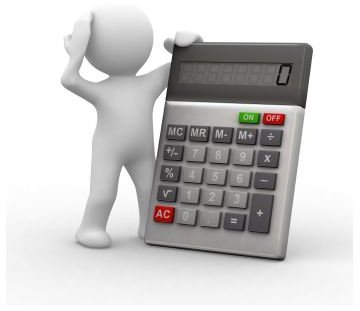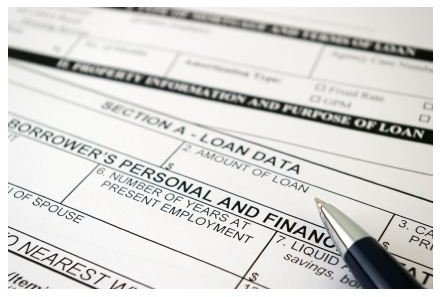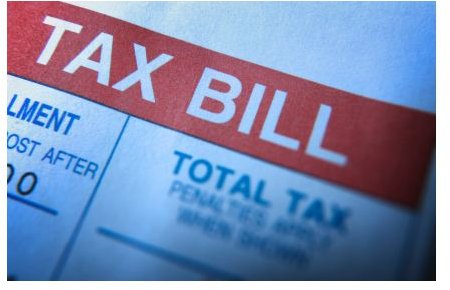Home Buyers: How Much Money Could I Borrow to Buy a House?
Required Financial Information
Before you begin calculating how much money you need there are a number of factors that must be taken into consideration. Home ownership comes with more than a mortgage payment. Home ownership will require payments for taxes, insurance and in the event of a condominium purchase, homeowner association fees. Additional expenses include home repairs, maintenance, water bills and other everyday expenses.
Home ownership comes with serious financial responsibilities and for most, this will be a commitment for as many as thirty years. The decision to buy a home is not one that should be taken lightly, it is a life altering decision.
Judging Financial Fitness
In order to determine how much money you can afford to spend on your home you will need the following information:
Income - Income from all sources should be taken into consideration. If you are currently a two-income family, calculate annual income. Income from annuities, rental income and other sources should only be included if you can prove that they will continue for a period of at least twenty-four months (your lender may require additional time).
Assets - While your assets will not play a significant role in how much money you can borrow, they will be required to determine your overall financial fitness. Assets must also be included on your loan application (Form 1003). Make sure you include such items as vehicles, antiques (that you have certified appraisals for) and high-priced jewelry (that is appraised). Life insurance policies that are fully paid up may also be included.

Expenses - In addition to your assets you will need to create a complete list of your debts. This list should include payments on life insurance, automobile loans, credit card debt and any other type of loan that you are liable to pay for more than six months. The easy rule of thumb is if you owe it, add it to your list.
Additional expenses which are often overlooked include payments on medical insurance (not covered by work), dental plans, vision plans and student loans. All of these payments must be accurately listed on your home mortgage forms. The more accurate your list of debts, the easier it will for you to determine how much may be borrowed to purchase your home.
Down Payment and Amount to Borrow
The down payment will also be a consideration. Down payments (in general) should be at least five percent (5%) of your purchase price. Depending on other factors such as your credit rating, property type and home value, this amount could potentially be higher. The source of your funds for your down payment should also be noted. Some potential homebuyers will use money from a 401(k) towards down payment, others will have saved the amount over time and others may have had the down payment (or portions of their down payment) gifted to them.
Calculating Debt to Income Ratios
Debt to income ratios can be easily calculated and will help determine how much a lender may approve for a loan. The calculations are based on gross income (not net) and should include the typical salary, child support payments (where applicable), or other regular monthly income that is expected to be ongoing. This will create the income side of your equation.
To calculate the amount of a home payment you can afford, you can use a specific percentage of your total gross monthly income to determine the maximum amount of money that you can pay out for all debts on a monthly basis. In most cases, lenders want to keep the debt to income ratio for housing expenses only to approximately twenty-eight percent (28%) of your income. This ratio is called a “front end ratio” and determines the maximum amount you can pay for housing expenses. These expenses include your mortgage principal, mortgage interest, property taxes and mortgage insurance. Most lenders refer to this as “PITI”.

A simple equation for housing expenses only is as follows:
- Monthly income (annual income divided by 12 and multiplied by 4.3) $6,000
- Maximum Housing Expense: 28% total allowed: $1,680
It is important to note that different loan programs may offer different ratios for housing expenses
Once you have determined your maximum housing allowance, you will then need to create what is known as a “back end ratio”. This ratio is used by lenders to evaluate the overall credit risk that you present to them. The back end ratio includes all expenses including housing, credit cards, auto payments and child support (to name a few). Most lending agencies prefer that the back end ratio not exceed thirty six percent (36%) of your monthly income.
The equation for a back end ratio looks like this:
- Monthly income (annual income divided by 12 and multiplied by 4.3) $6,000
- Maximum back end ratio: 36% total allowed: $2,160

Now that you have these two numbers, you can easily see that the maximum total debt (including housing and all credit obligations) is $2,160 per month. If your housing expenses are $1,680 per month then you may only be indebted on other expenses in the amount of $480 per month.
This is the easiest way to calculate your debt to income ratio. It is important to keep in mind that most of the information will be required on your home mortgage application (Form 1003). You can save a lot of time if you do some of these calculations before filling out a loan application to determine if you will be eligible for a mortgage.
Down Payments, Interest Rates and Loan Amounts

The amount of money available to put down on a new home will also help answer how much money may be borrowed. Nearly all lenders will require that a home buyer put at least five percent (5%) down on a new purchase. Exceptions for FHA and VA loans do exist. The more money that you are able to put down, the lower your loan amount will be. In most cases, this means a reduction in monthly expenses, allowing you to either purchase a home with a higher value or take advantage of lower monthly payments. The higher your down payment, the better for your debt calculations. In addition, if the down payment amount is in excess of 20%, this also allows you to eliminate the need for personal mortgage insurance (PMI) which is designed to guarantee loans that are of higher loan to value ratios. This saves money on closing costs.
Here is an example to consider:
- Down payment available: $25,000
- Loan to value ratio: 90% (assuming 10% down)
- Maximum loan amount: $225,000
- Property value: $250,000
Using the same down payment and a lower loan to value ratio:
- Down payment available: $25,000
- Loan to value ratio: 80% (assuming 20% down)
- Maximum loan amount: $100,000
- Maximum property value: $125,000
If the interest rate remains constant at 6% using the same loans (that is the $225,000 and $100,000) the monthly payment estimates for principal and interest on a thirty-year mortgage loan are as follows:
- Loan amount: $225,000
- Interest rate: 6%
- Monthly payments: $1,348.99
Using the same interest rate (6%) and term (30 years) the lesser mortgage loan would look like this:
- Loan amount: $100,000
- Interest rate: 6%
- Monthly payments: $595.55
Clearly the larger percentage down payment has a positive impact on your lending power by reducing the overall debt ratio calculations. There are significant benefits to larger down payments, including quick equity in the property.
There are several methods that may be used to answer the question how much money you should consider borrowing. The calculations are important as they will help you to find the loan and the home that is right for your individual needs. These simple steps will help you determine what is right for your financial future.
Using Ratios to Determine Home Purchasing Power
Now that you have a clear vision of your maximum monthly mortgage payment, you will be able to take the next steps towards answering the question how much money can you borrow to buy a house. The next phase of these calculations are slightly more complicated but will provide you with general information.
The information you will need is as follows:
Maximum monthly housing payments - using the same calculations that were used in the prior example, the maximum housing expense allowed is approximately $1,680. This amount has to include insurance as well as taxes.

Determining monthly taxes - property taxes are based on the tax valuation of a specific piece of property. Many cities and towns place their tax rates for property on a town website. Those who are interested in determining how much their annual tax bill will be can use these figures to help them determine approximate annual taxes. It is important to remember that the town valuation of a property is not always equal to the appraised value. To get this amount as close as possible it is a good idea to use approximately twenty percent (20%) higher than the appraised value to determine the tax valuation (note that in some areas this will be lower and in others it will be higher). This will provide a general idea of monthly tax burdens for property taxes. It is also important to note that many realtors will provide this information in the sales listing.
Determing monthly insurance - insurance rates are calculated based on the square footage of a home and the town or city where the dwelling is located. Generally speaking, using an insurance calculator is helpful for most people. Square footage can be estimated by reviewing home listings of properties that you are interested in or by using average home sizes in the area.
Now you can reduce your monthly maximum housing expense (from your ratio) by the amount of taxes and insurance that you estimate that you will be required to pay. The remaining balance will tell you how much you can afford to pay for your mortgage principal and interest only.
Image Credits
Purchased images
- Form 1003: istockphoto.com/Riverlim
- Tax Bill: istockphoto.com/DNY59
- Debt burden: istockphoto.com/frentusha
- Broken piggy bank istockphoto.com/Captainflash
- Calculator: istockphoto.com/koun
References
- FHA Home Loans Calculator: http://www.fha-home-loans.com/debt_ratios_fha_loans.htm
- BankRate Loan Calculator: http://www.bankrate.com/calculators/mortgages/loan-calculator.aspx
- FHA Loan Requirements: http://www.fha.com/fha_loan_requirements.cfm
- Home Insurance Calculator: http://homeinsurance.com/calculators/home-insurance-calculator.php
- Mortgage Prequalifying Calculator: http://www.mortgage-info.com/mortgage-calculators/mortgagequalifyingcalculator.aspx
